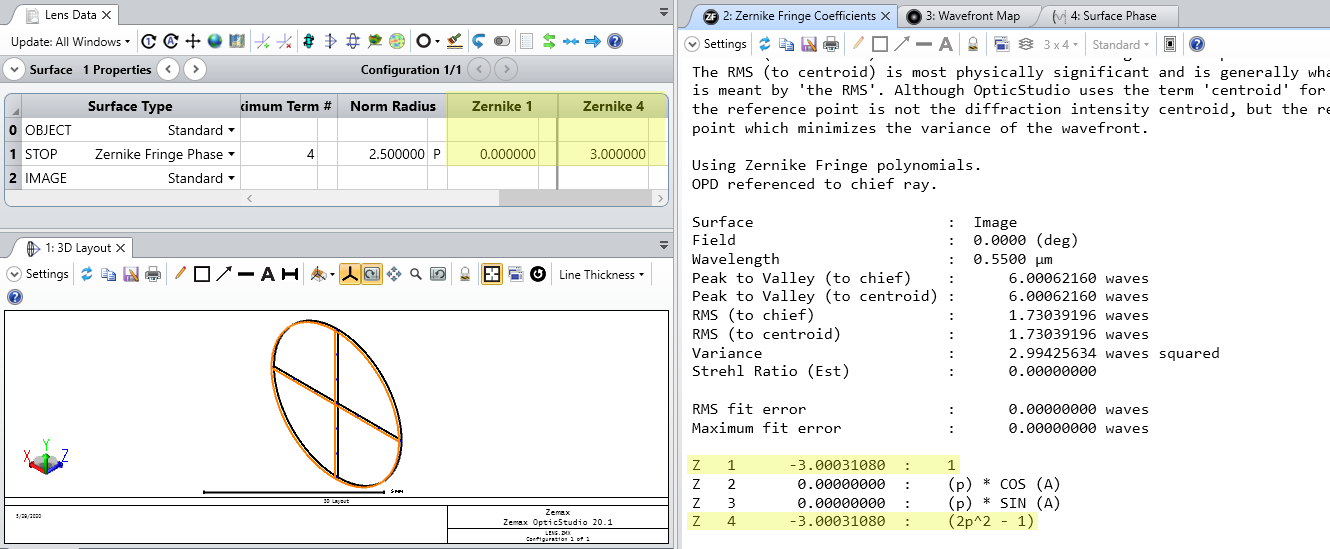I have a simple system where I have some Zernike terms defined for a Zernike Fringe Phase surface. I have no Z1 term defined. How come it appears in my Zernike Fringe Coefficients window?

Enter your E-mail address. We'll send you an e-mail with instructions to reset your password.